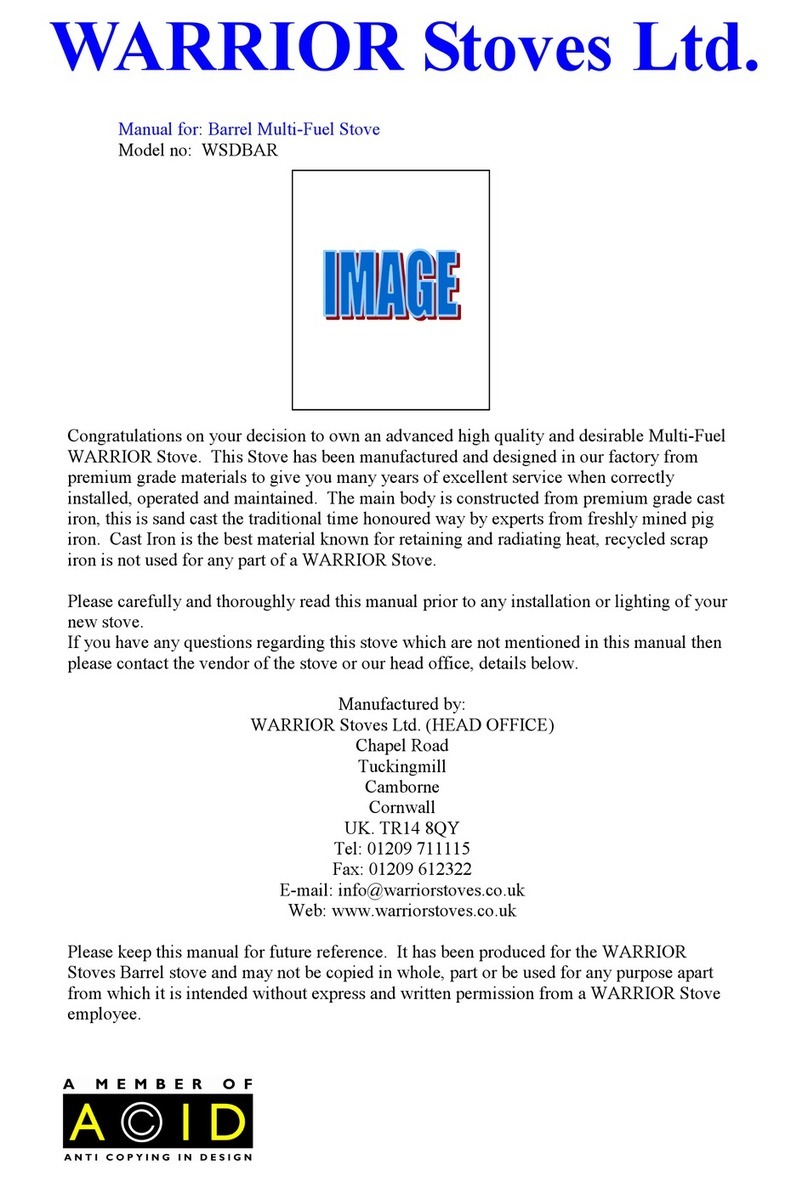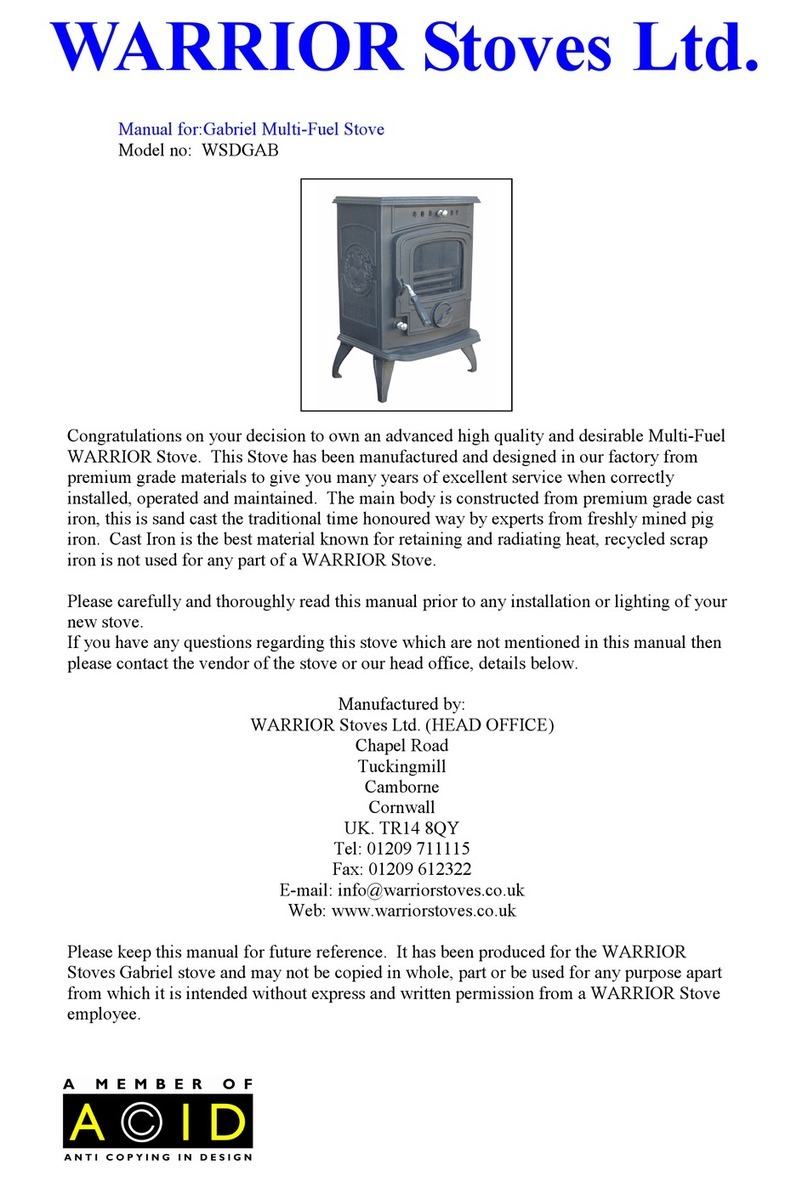STOVE ASSEMBLY
Care should be taken when unpacking and assembling your stove. Stoves are heavy and
therefore due consideration is required in lifting and moving into the final location. Where
possible use a sack truck or trolley and obtain assistance rather than struggling or risking
personal injury. You may find that it is easier to open the stove and remove loose items to
reduce the weight of the stove. The following are useful techniques for manual lifting:
•
Keep the stove close to your waist with your head facing forwards and your back
straight.
•
Do not twist at the waist, reposition your feet as necessary.
•
Bend both legs to maintain stability.
•
Avoid twisting your back, leaning forwards or sideways when handling the stove.
•
Smooth and controlled movement will help to keep the stove under control, avoid
snatching or jerking when moving the stove.
•
Always grip with the palms of your hands preferably wearing gloves to provide
additional grip, do not rely solely on fingertips for support.
•
Wear suitable clothing, avoid wearing ties and other loose items that could get caught
in the stove. The use of protective footwear with steel toecaps is advisable.
This stove requires little assembly prior to moving into it’s final location.
Firstly carefully unwrap the stove and the contents either on the original packing or onto a
sheet of plyboard or similar in order to minimize the risk of damage to the furnishings
below.
After unpacking remove the loose items from the stove which require fixing, these parts
should be: The Legs, the Stove Outlet and the Stove Outlet Blanking Plate and the Handles.
These parts should be easily identifiable from the exploded parts diagram listed near the end
of this manual. Attach the legs to the base of the stove with the bolts provided, these bolts
are already attached at the base of the stove in the correct location. Tighten with firm
pressure without over tightening.
The Stove Outlet and the Stove Outlet Blanking Plate again require bolting into the correct
position, (determined by flue exit, possible from the Top or the Rear of this stove) with the
bolts provided. Prior to fixing a smear of fire cement and or heat resistant rope is
recommended to ensure the join is airtight. See the note in the Stove Installation Section
regarding the caustic nature of fire cement, again do not over-tighten the bolts. The handles
simply bolt on.
Inside the Stove there should be the following:
•
Grate with Fuel Retainers.
•
Ashpan & Ashpan removal Tool.
•
Baffle/Throat Plate.
•
Side Cast/Refractory Brick Linings.
•
Rear Cast/Refractory Brick Linings, please note for Back-Boiler Model Stoves these
will not be in the stove, they are replaced by the Back-Boiler.
All of these internal parts should be easily identifiable from the exploded parts diagram
printed near the rear of this manual. If any parts have become dislodged during transit then
it should be straightforward to re-locate in their respective places. Should parts need bolting
back in place, do not over tighten.
If you have any questions regarding the parts within the stove which are not mentioned
above then please contact the vendor of the stove or our head office.
4





























